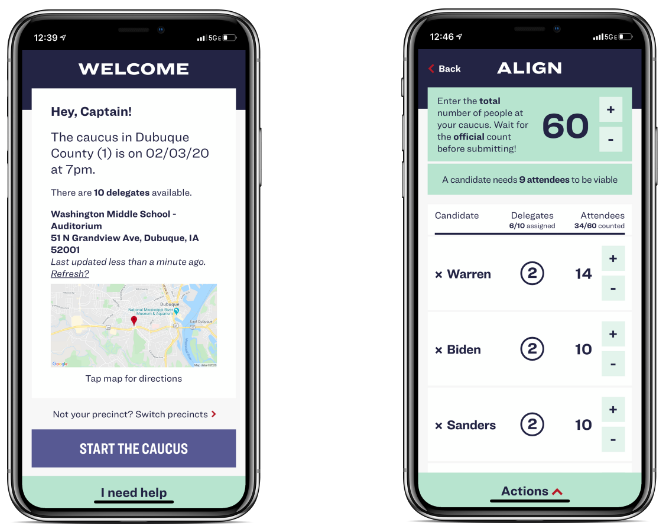The relationship between the United Kingdom and Australia is not usually a flashpoint in international relations. After all, the two allies share a common language, ancestry, and monarch. So what caused a dustup recently that saw a senior Australian parliamentarian rebuke the British foreign secretary, and for a group of Australian MPs to then cancel a trip to London in protest?
The answer is fears over Huawei, the Chinese telecom giant at the center of the 5G next-generation wireless debate. Australian officials were miffed when the British government recommended that the company be allowed to play a limited role in the U.K.’s 5G deployment despite calling it a “high risk” supplier due to its close ties to the Chinese government (the company’s founder, Ren Zhengfei, served for many years as an engineer in the People’s Liberation Army). The Australian government, a fellow member of the Five Eyes intelligence alliance (which includes the two countries plus the United States, Canada, and New Zealand), disagreed back in 2017 when it barred Huawei on national security grounds.
Now, two close allies are at cross purposes about the very future of the internet. What’s at stake is not just who equips the future of telecom infrastructure, but the very values that the internet itself holds.
Two countries, ocean(s) apart
It’s not just Australia and Britain that find themselves separated by an ocean (or two). In America, Huawei has become the Trump Administration’s favorite company to hate. In a speech at this year’s Munich Security Conference, Defense Secretary Mark Esper called the company “today’s poster child” for “nefarious activity” while another White House official compared the company to “the Mafia.” It should come as no surprise that the company is the target of trade restrictions, a criminal action against its CFO, and a concerted diplomatic campaign.
America’s concerns are twofold. First, that critical infrastructure provided by a Chinese company with such close ties to the country’s central leadership is an unacceptable security risk. Second, that arresting Huawei’s increasing dominance risks surrendering any chance for American leadership in 5G technology.
National security considerations have predominantly driven policymakers in Australia. More alert by geography to the strategic risks posed by China, Canberra moved early and decisively to bar Huawei from participating in its 5G networks at all. “The fundamental issue is one of trust between nations in cyberspace,” writes Simeon Gilding, until recently the head of the Australian Signals Directorate’s signals intelligence and offensive cyber missions.
That lack of trust between China and Australia is compounded by the difficult geopolitics of the Asia-Pacific. “It’s not hard to imagine a time when the U.S. and China end up in some sort of conflict,” says Tom Uren of the Australian Strategic Policy Institute (ASPI). “If there was a shooting war, it is almost inevitable that the U.S. would ask Australia for assistance and then we’d be in this uncomfortable situation if we had Huawei in our networks that our critical telecommunications networks would literally be run by an adversary we were at war with.”
Gilding warned, “It’s simply not reasonable to expect that Huawei would refuse a direction from the Chinese Communist Party.” And no matter what reassurances Huawei executives have given, they just simply haven’t been able to ally those concerns. Beijing didn’t help Huawei’s case when it passed its 2017 Intelligence Law, which obliges all Chinese companies and individuals to assist with intelligence efforts if asked. “People were always afraid [that might happen],” adds Uren, “and having it in writing really solidified those concerns.”
As a result, Canberra’s policy to ban Huawei has been largely uncontroversial. With the exception of some of the country’s telecom companies, “the decision [to ban Huawei] has bipartisan backing,” says Simon Jackman, CEO of the US Studies Centre at the University of Sydney.
Calling out London
American officials wish their British counterparts shared Australia’s outlook – and haven’t been shy about saying so. Secretary of State Mike Pompeo urged the UK to “relook” at the decision and lobbied Prime Minister Boris Johnson on the issue on a recent trip to London. Meanwhile, Defense Secretary Esper has made clear that electing to use Huawei could threaten allies’ access to American intelligence. “If countries choose to go the Huawei route,” Mr. Esper told reporters on the sidelines of the Munich Security Conference, “it could well jeopardize all the information sharing and intelligence sharing we have been talking about, and that could undermine the alliance, or at least our relationship with that country.”

U.S. Secretary of State Mike Pompeo leaves 10 Downing Street after a meeting with British Prime Minister Boris Johnson on 30 January 2020 in London, England. (Photo by WIktor Szymanowicz/NurPhoto via Getty Images)
British officials not only believe this to be a bluff – the Five Eyes intelligence alliance is much too strong in their view – but have a different assessment of the risk Huawei poses. “Everyone’s perception of the Huawei risk is particular to them,” says Nigel Inkster, a former deputy chief of MI6 now at the London-based International Institute for Strategic Studies (IISS).
The U.K. goes even further though. Experts in the British government, which started using Huawei in its 3G and 4G networks back in 2003, believe that not only can the risks be mitigated, but they are being overstated in the first place. “The Australian approach is driven by the kind of worst-case analysis of the risk 5G could pose in effect on the brink of war,” says Inkster. “I don’t think the U.K. envisages going to war with China any time soon.”
Inkster and other top officials remain confident in the Huawei Cyber Security Evaluation Centre (HCSEC), which was established by the National Cyber Security Centre (NCSC) back when Huawei was first introduced into Britain’s telecom networks. “We’ve never ‘trusted’ Huawei,” wrote NCSC Technical Director Dr. Ian Levy in a January 2020 blogpost. As a result, the U.K. has “always treated them as a ‘high risk vendor’ and worked to limit their use in the UK and put extra mitigations around their equipment and services.”
Levy and the government’s other cybersecurity experts believe that their system will continue to work. “The basic cyber security measures that have been used for 3/4G also apply to 5G,” argues Marcus Willett, who also served as the first Director of Cyber at GCHQ, Britain’s signals-intelligence agency. “If Huawei had been playing games, we would have discovered it by now,” says Pauline Neville-Jones, a Conservative member of the House of Lords, and previously security minister and cybersecurity advisor in former British Prime Minister David Cameron’s government.
British regulations already restrict Huawei and other high-risk vendors in several ways, including capping their market share at 35% and ensuring their equipment is continuously evaluated by HCSEC. In addition, by preventing Huawei’s 5G kit from being used near sensitive sites and limiting it to the periphery of the network (as opposed to the core), British officials are confident that they can contain any additional risk.
That’s not to say Huawei doesn’t face stiff opposition from some corners. Even if you mitigated the risk, it’s “quite a leap to allow the Chinese to be intimately involved in something as sensitive as this,” one U.K. retired diplomat, who spoke on condition of anonymity due to the sensitivity of the topic, told me. And the company is no one’s first choice. “If the U.K. didn’t have Huawei in its system, it wouldn’t choose to have Huawei now,” Lady Neville-Jones told me. “But we are in a different place [than Australia] and we have set up a system which we believe enables us to manage the risk. And by God, we will be on alert. We’re not stupid. [But] you say to yourself, at the end of the day, do you trust your technical people or not? And there’s never been a complaint on backdoors or traps.” Indeed, government experts have often caught coding errors she adds. “I suspect the result of [British inspections] is that technically Huawei is a better company than it might otherwise have been.”
The British position is also rooted in game theory. “Even if you could [bring down the network], when would you do it?” asks Willett, formerly of GCHQ. “It is effectively a ‘one shot’ capability – if used by China, it would undermine the position of all Chinese companies in the world tech market. China would therefore presumably save the ‘one shot’ for war or near-war, in which case it would need to be sure it would work. That is not easy.”
Australian experts are skeptical, though. “I think [the British] are overconfident in their ability to mitigate [the risk],” Uren, the ASPI expert, told me. His view – widely shared in Australia – is that defenders always think they can defend a system until they can’t, and giving a Chinese company access to the network is already a concession too far. “Cybersecurity is all about raising the costs for the attacker,” writes Gildling, the former Australian official. “Network access through vendors — which need to be all over 5G networks to maintain their equipment — effectively reduces the access cost to zero.”
The economic equation in Europe
It’s hard to understate the difference geography makes, though. In America and Australia — Pacific powers — China is physically present. For Europeans — including Britain — the risks of a rising China don’t carry the same emotional weight.
“The idea of China being a direct security threat is still somewhat abstract,” says Dr. Janka Oertel of the European Council on Foreign Relations. With the exception of countries like Poland and Estonia which are reliant on U.S. military support and thus more willing to toe Washington’s line, “European governments have just begun to assess the risk China can pose in the cyber realm.” Partly to allay those rising concerns, Huawei about a year ago established a a Cyber Security Transparency Centre in Brussels, the de facto capital of the European Union. Unlike Britain’s HCSEC, however, it is not an independent evaluation center and it is not designed to carry out the same functions.
Economics dominate the conversation on the continent more than national security concerns. The fragmented telecom market in Europe (105 mobile operators versus just four in America), has also proven beneficial to Huawei. In a competitive environment where cost has become everything, the state-subsidized Huawei is often able to underprice its competitors. Even in Britain, security concerns were weighed against the fact that “stripping out [the Huawei components already in the system] and starting again would carry enormous costs,” Inkster told me.
Still, Oertel thinks the debate in Europe is being debated on the wrong grounds. “It’s really hard to say Huawei is cheaper than Ericsson or Nokia. No one has the numbers because these are all contracts between private companies. We’re talking a lot of hypotheticals.” Her concern is that while Huawei might seem cheaper now, that might change if it’s able to squeeze out competitors and raise prices.
The battle isn’t over yet, though. Ericsson and Nokia maintain that they are competitive on technology and cost. Indeed, Ericsson is already running 27 5G networks in 15 countries and was just selected by the Danish government to build the country’s 5G network, displacing existing Huawei equipment. Meanwhile in Germany, the government’s move toward using Huawei has run into sharp opposition in the Bundestag, the German federal parliament. Norbert Röttgen, a prominent member of Chancellor Angela Merkel’s own party, helped draft a bill that would bar any “untrustworthy” company from “both the core and peripheral networks.”

Norbert Roettgen, CDU at the Bundespressekonferenz the occasion of the candidacy for the CDU chairmanship, on February 18, 2020 in Berlin, Germany. (Photo by Felix Zahn/Photothek via Getty Images)
The Trump Administration is still concerned enough about Huawei’s potential ability to dominate 5G worldwide that it is actively campaigning for a Western alternative. “We are encouraging allied and U.S. tech companies to develop alternative 5G solutions,” Defense Secretary Esper said in Munich, where he also exhorted fellow security officials to “develop our own secure 5G network … so we don’t regret our decisions later.”
Other American officials have suggested even more extraordinary measures. Declaring in a February speech that nothing less than “our economic future is at stake,” Attorney General William Barr (who also served formerly as a long-time lawyer for U.S. telecom and TechCrunch parent company Verizon) bluntly called on the U.S. and its allies to “actively consider” a proposal for the government and U.S. companies to take a controlling stake in Nokia and Ericsson. “Putting our large market and financial muscle behind one or both of these firms would make it a far more formidable competitor.”
Ericsson dismisses these comments. “Personally, I find it odd that Barr is even thinking like this really,” Gabriel Solomon, a senior Ericsson executive in Europe, told me. “We were first to commercial deployment in four continents. We are in a very competitive market.”
Indeed, that echoes a common view in Europe: that the goal of American policy on Huawei is less about security and more about market share – and making sure America, not China, owns the future of 5G. And that has its own risks. “Cutting out Huawei altogether potentially moves us toward a kind of bipolar, bifurcated internet, which if taken to logical extreme would have some very serious adverse implications for everyone in terms of cost, a slowdown in innovation, and general reduction in intellectual and technical interchange,” says Inkster, the former MI6 official.
Things would be easier, Europeans say, if America presented an obvious alternative. Without one, America’s allies feel they have little choice but to use Huawei if they don’t want to fall behind technologically. “The West has got itself in a mess,” says the retired British diplomat. “It is a striking failure of political cooperation and coordination that we should find ourselves in this position.”
There is still optimism on both sides of the Atlantic that a Western solution can be found. As Röttgen of Germany wrote in a tweet in February:
Rather than pick a champion, another solution would be to level the playing field. “Telecoms security doesn’t pay,” concedes Dr. Levy of HCSEC. And “externalising the security costs of particular choices (including vendor) will help operators make better security risk management decisions.” Another option: better national screening investment mechanisms that would limit the ability of state-owned enterprises to operate unfairly.
But to get there requires coordination and cooperation – and that isn’t necessarily as forthcoming as you might expect. Germans still remember that the NSA hacked Chancellor Merkel’s phone – and the Trump Administration’s trade war has targeted Europe almost as much as it has China. Röttgen cautioned that cooperation on 5G was connected: “[W]e must know that tariffs against Brussels are off the table,” he said in the same tweet. “Partners don’t threaten one another.” Meanwhile, Huawei is earning goodwill by sending medical equipment to Europe to help combat the COVID-19 pandemic.
“Technology was supposed to unite us,” laments Jackman, the Australian professor; “instead it’s driving us apart not just from our rivals, but our allies, too.”

Source: Tech Crunch












 alternatives. But to do so we must know that tariffs against Brussels are off the table. Partners don’t threaten one another.
alternatives. But to do so we must know that tariffs against Brussels are off the table. Partners don’t threaten one another. 